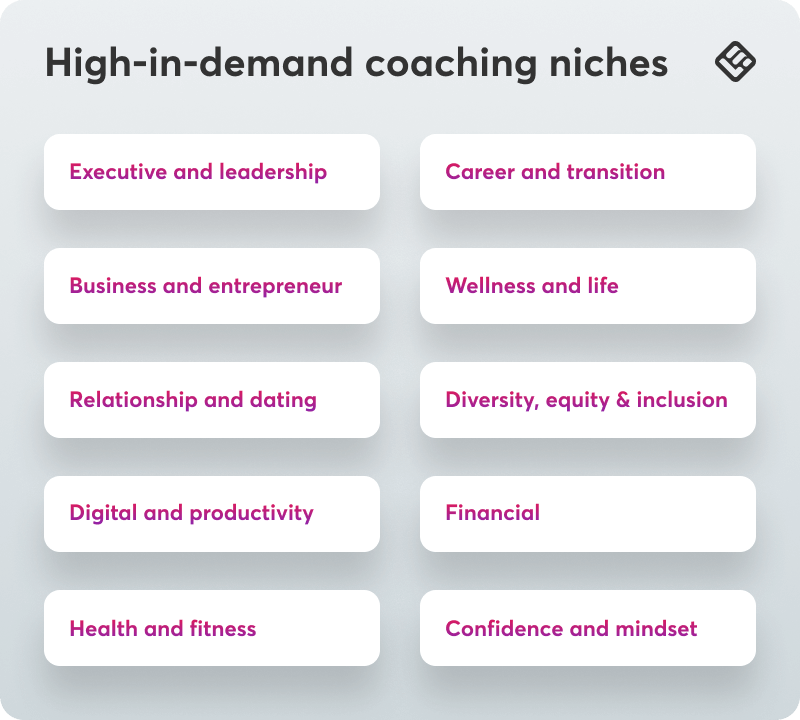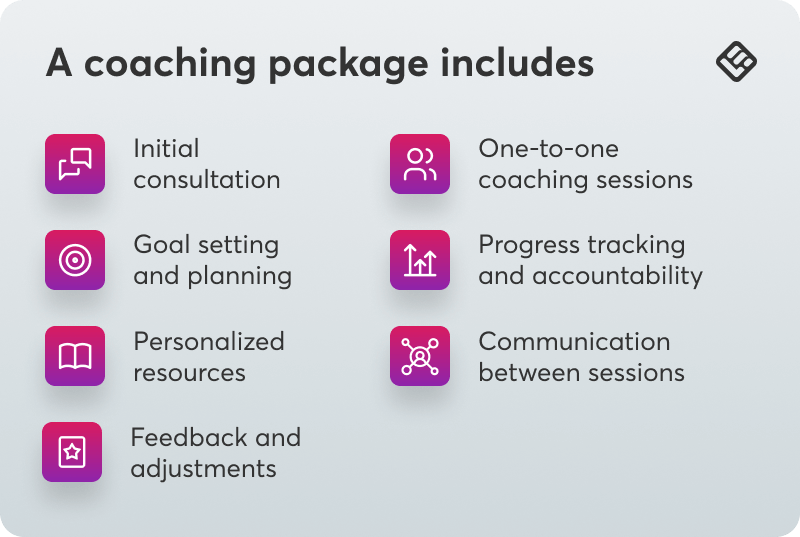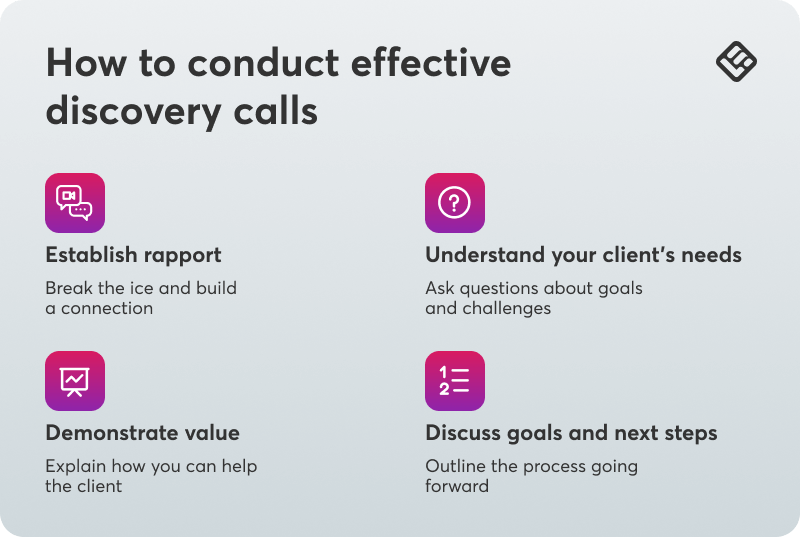Table of Contents
If I told you that the global online coaching industry is projected to hit $11.7 billion by 2032 [1], I bet you’d be pretty happy. And not only can it be lucrative, but coaching is a great way to make a real difference in your clients’ lives.
But what if you struggle to get clients to sign up? Offering a valuable service is one thing, but actually selling coaching services online is another. The good news? You don’t need to get complicated with your sales techniques, just strategic.
If you’re wondering how to sell coaching services online, give these strategies a shot, and you’ll see what I mean.
Introduction to the coaching business
Building an online coaching business is more than simply offering advice. It’s a fully-fledged service, one that helps your clients reach their specific goals through structured support and professional guidance.
I know that might sound obvious, but it’s easy to lose sight of when your focus shifts to posting content or setting up tech tools to make sales. But at its core, coaching is human. Selling it well starts with remembering that your job is to help someone grow, not just get them to buy.
Now, with that in the back of your head, let’s go over those effective coaching sales techniques you came here for.
Understand your coaching niche
You might have heard this before, but appealing to everyone often means you’re connecting with no one. To connect with your ideal clients, you need to get clear on your niche—that hyper-specific area of your coaching category.
This is what Jeff Mains from Champion Leadership Group talks about.
Jeff Mains, Founder and CEO at Champion Leadership Group
Let’s say you’re a fitness coach. That’s your category. But within that category, your niche could be something like prenatal coaching for expecting mothers over 30 or back pain relief coaching for IT desk workers.

The more specific you get with your niche, the easier it becomes to build offers and get people to pay attention.
Identifying your unique value proposition
Once you know your niche, you need to create your unique value proposition. This is a short explanation of the result your clients see and what makes your approach unique.
If you’re helping IT desk workers with back pain, your value proposition could be something like: “I help tech workers reduce chronic back pain through customized posture coaching and short, daily movement routines—no gym necessary.”
Pinpoint a value proposition that tells people what you do, who it’s for, and what makes it useful to your ideal clients.
Targeting the right audience
You’ve got your niche and your value proposition, so identifying your target audience becomes fairly easy. In the examples above, the audience would be “expecting mothers over 30” or “IT desk workers”.
You’ll keep your target audience in mind for all the remaining strategies. Remember, this is really about what you can offer them.
Craft a coaching program
A structured coaching program is easier to sell than a vague offer of support or open-ended sessions. When potential clients understand what they’re getting and how it helps them reach a goal, they’re more likely to sign up and stay committed.
Even if your coaching style is flexible, giving your offer a clear shape shows people you have a plan.
A simple coaching program might include:
This kind of structure makes your offer easier to explain during discovery calls and on your website. Once you’ve built a clear program, the next step is to package it into purchasable sets.
💡 For a step-by-step breakdown, check out this guide on how to build a coaching program.
Package your coaching services
A coaching package is a productized version of your service. It gives your program a clear, structured framework that makes it easier to sell coaching services online.

A good package tells clients things like:
Packaging also helps you. It gives you a base offer to refine over time and reduces the chance that your clients will ask for more outside of what they have paid for.
Building attractive coaching packages
If you’re not sure how to sell coaching packages, it starts with turning your service into something clients can easily understand and say yes to. Here are some tips to make yours stronger:
You don’t need to over-design your offer. Just make it clear and easy to understand.
Pricing strategies for your services
How do you charge for coaching services? Try to think of pricing coaching services in terms of what results you’ll be getting for your clients, not how much time they will be spending with you. This is value pricing for your service offerings rather than hourly pricing.
Some effective pricing strategies include:
And remember how I mentioned limiting your options? A good practice is to go for three: a low-, mid-, and high-priced option. It shows potential clients what they can get and gives them the power to choose what fits their budget.
Build an online coaching business
Your business needs a place to live. That might be a website, or it might start on social media.
Ideally, you’ll have both. A professional coaching website gives your business a home base. Social media helps you stay visible and connect with potential clients. But even if you’re starting with just one, it can still work.
Developing a professional website
A website makes your coaching business feel established. It shows potential clients that you’re serious, and it gives them a central place to learn more and take action.
And you don’t need a huge site either. Just focus on a few key things:
WordPress is a popular choice, but if you aren’t familiar with building sites, I recommend something like Wix or Squarespace.
Making use of social media platforms
Social media is where many people will first come across your coaching. If you’re not ready for a website yet, your profile can still act as a simple starting point.
Use your bio to explain what you do and who you help. Pin a post that shares your current offer or how to get in touch. Post content that speaks to your audience’s challenges or goals.
Pick one or two platforms where your ideal clients already spend time and focus on showing up there consistently. Don’t get too hung up on your content being perfect, it just needs to be clear and consistent.
Sell coaching services
For many coaches, this is where things get sticky. But let’s move away from the pitch-heavy mindset and approach selling differently. Think of selling your services as making it as easy as possible for your potential clients to say yes.
This involves creating a coaching offer that addresses your audience’s pain points and having honest, helpful conversations with potential clients.
Creating a coaching offer
We’ve talked about building and packaging your coaching offer, but here’s where you shift into how you present it when someone is seriously considering working with you.
This is where all of that work to get clear on your online branding and messaging shines through. People aren’t just browsing anymore, they’re deciding. That means your offer needs to speak directly to the outcome they care about in simple language they can picture.
When you’re describing your offer, focus on:
These conversations might happen through email or DMs on your socials. But if you laid the groundwork well, you’ll have most of them through discovery calls.
Conducting effective discovery calls
Wondering how to sell coaching packages? This is the moment to present them clearly and confidently. During a discovery call, a potential client asks questions and talks through their hesitations. They want to figure out if your coaching is a good fit for them.

I know it might feel tough, but your job isn’t to pitch during these calls—it’s to listen. Get curious. Ask why they reached out, what they’re hoping to change, and what’s felt hard up to this point.
When a call feels more like a conversation than a sales pitch, it builds trust even if they don’t buy right away.
Handling objections and closing coaching sales
When it comes to selling coaching, objections aren’t necessarily a bad thing. You can learn a lot from them. Practice reframing a potential client’s objection into a thoughtful question. This could look like:
→ If they’re worried about time, ask what they’ve tried before and how that’s worked
→ If they mention cost, revisit the result they want and what it’s worth to them
→ If they say “I need to think about it”, offer to follow up in a few days
When someone’s on the fence, don’t push. Revisit what they told you they want, and walk them through how your coaching helps get them there.
Market your coaching services
Potential clients need to find you if you’re going to make more sales. Together with your offerings and online presence, you need to market your online coaching services. There are many marketing strategies for coaches, but I’m just going to talk about three that are especially useful for online coaches.
Content marketing and blogging
Don’t let anyone tell you that blogging is dead. As someone who makes a living writing blog articles for companies, I can tell you that content marketing and blogging are fully alive and well.
Write the kinds of posts that address your clients’ questions and concerns, like:
You don’t need to post every day, but being consistent can help you rank better on Google. And don’t be afraid to repurpose content, one good blog post can become a week’s worth of content across your other channels.
Email marketing campaigns
Email campaigns are one of the best ways to stay in touch with people who are already interested in what you offer. It’s a direct line from you to them and keeps your services at the front of their mind.
An email marketing campaign can be simple. A short welcome sequence. A weekly tip. A story from a client. A reminder that your calendar is open. Keep your tone conversational. Share useful things, and include a clear link or call to action, like booking a discovery call or checking out your current offer.
These emails don’t have to convert right away. The point is to keep the connection going so that when they’re ready, they know where to go.
Utilizing webinars and workshops
Webinars and workshops give people a chance to engage with your coaching in a low-pressure setting. They’re a great way to build trust with potential clients who need to see how you work before they’re ready to buy.
Choose a topic that solves a specific problem or answers a question your audience is already thinking about. Keep it focused and tied to the kind of support you offer in your coaching. At the end, let attendees know how to keep working with you with a clear call to action.
And not to worry, if setting up online media isn’t your strong suit, there are excellent online platforms and tools to help you.
Use online platforms
Online platforms can help you with everything from creating engaging courses to managing the admin and payment side of your business. You don’t need a complicated tech stack either, but a few key tools can help you stay organized and keep your focus on your actual coaching.
Using platforms like LearnWorlds
If you’re building a course or offering digital resources to sell online coaching, a coaching LMS like LearnWorlds can help you organize everything in one place. Instead of sharing materials with your clients through scattered links, you can give clients a single, professional space to log in and access what they need.
You can use it to:
Your clients can access your coaching resources from anywhere, even from their mobile phones, and it makes everything far easier to manage on your end.
💡 Interested in using AI tools? LearnWorlds comes with a powerful AI Assistant and shows what a robust AI coaching platform can look like.
Automating scheduling and payments
Chasing down bookings and payments is a quick way to burn out. Tools like Calendly, Acuity, and Paperbell let your coaching clients handle scheduling and checkout on their own.
Automation tools can cover:
Getting my payment systems worked out was one of the first things I did when setting up my online business. Let me tell you, not only does it help you stay organized, but it also demonstrates professionalism to your clients.
💡 Here’s a roundup of the best online coaching platforms to get started.
Build credibility and trust
The industry is growing, yes, but that also means you have more competition. How do you stand out from that competition? Build credibility and trust. To do so, I recommend gathering client testimonials and establishing yourself as an expert in your niche.
Alli Rizacos, who is running her own coaching business, agrees.
Alli Rizacos, Founder & CEO at Alli Rizacos Coaching Inc.
Collecting and showcasing testimonials
Testimonials are an incredibly effective way to build trust, especially if you’re selling coaching services online. People want proof that your work actually helps.
Make it easy for clients to give you something useful:
Display testimonials on your sales page, in your emails, on your booking form, and your social media pages. The right quote at the right moment can move someone from on the fence to fully signed up.
Establishing thought leadership
Thought leadership has become a bit of a buzzword these days, but that doesn’t mean it isn’t still valuable. You become a thought leader when people start to see you as someone worth learning from in your niche.
This means staying away from generic advice and sharing genuinely helpful content.
To do this, try:
When thought leadership is done right, it demonstrates that you know what you’re talking about and have real experience to back it up.
Scale your coaching business
Once you’ve got a steady stream of clients, you might start thinking about how to grow.
For coaches like you, two of the most common ways to scale your coaching business are through group coaching and creating digital products.
Group coaching and membership models
Group coaching lets you support more people in less time. It works well when clients are working toward similar goals and can learn from each other. You still lead the sessions, but your time goes further.
Membership models offer ongoing access to coaching online or your community resources for a recurring fee. They’re a simpler way to stay connected with your clients while scaling your reach.
Both options give you room to grow without adding more 1:1 coaching sessions to your calendar.
Creating online courses and digital products
Courses and digital products let you package your expertise once and sell it over and over again. And you don’t need a big launch or hours of video to make it work. Start simple by selling recorded course sessions on your chosen platform or digital products on your website.
Start with one specific problem your coaching already solves, and turn that into a short course or video resources for your paid community. It’s a simple way to scale your offerings and build another income stream that runs in the background.
If you’re looking for help building materials, here’s a collection of useful coaching resources.
Measure success
Tracking your results helps you improve your offers and focus on what sells.
Here are some areas to measure:
Some platforms, like LearnWorlds, include built-in analytics for your courses and products. Your website and scheduling software all offer helpful insights, too.
The numbers are there to help you figure out what’s working and what isn’t, and the rest is simple: do more of what is working, fix what isn’t.
Final thoughts
If you’re looking for a clear approach to how to sell coaching services online, trust me: these strategies will set the groundwork for consistent results. You don’t need to use them all at once, but the more intentional you are about how you sell, the better your results will be.
And if you’re ready to jump in, check out this free coaching trial with LearnWorlds. You’ll get access to a free online coaching guide and see how easy it is to move beyond 1:1 coaching with this comprehensive platform.
Sources:
[1] The Coaching Industry Market Size in 2025 – by Luisa Zhou

Ciera Lamb
Ciera is a freelance content writer and editor connecting companies with their ideal audiences through blog articles and other online content. She approaches her writing with curiosity and research and enjoys the ever-present learning that comes with being a content writer. She is also an avid scuba diver, an aspiring Dutch speaker, and lover of all things nature.
FAQ
Everything you have ever wondered, but were too afraid to ask...




